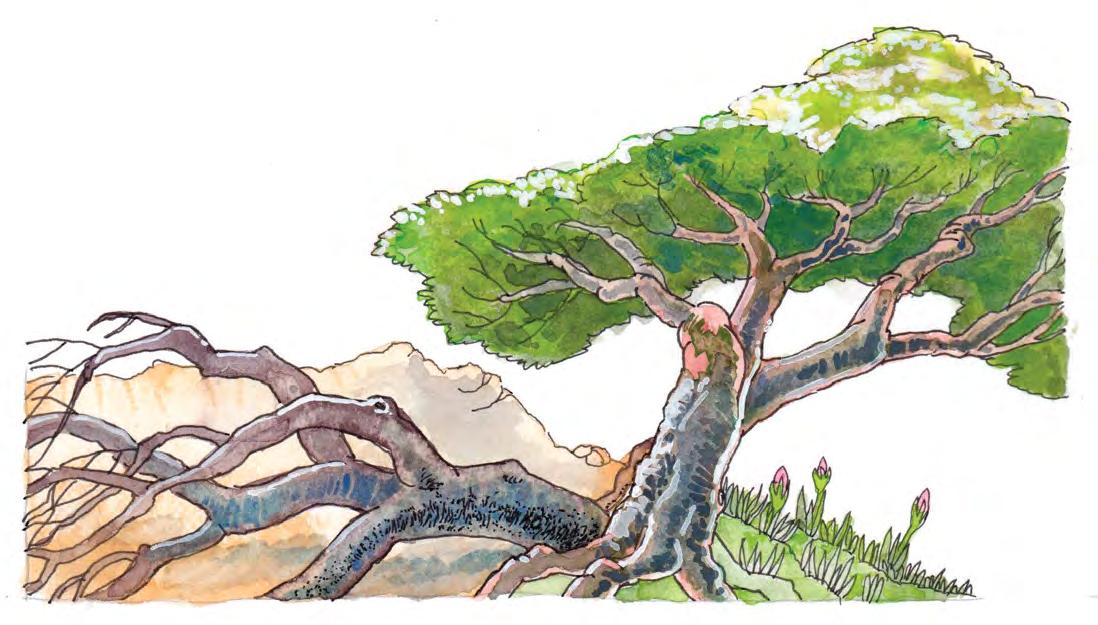
4 minute read
Trauma-responsive worship
“Each of us has lived through some devastation, some loneliness, some weather superstorm or spiritual superstorm, when we look at each other we must say, I understand. I understand how you feel because I have been there myself. We must support each other and empathize with each other because each of us is more alike than we are unalike.”
Maya Angelou I believe that the worship service succeeded. It fulfilled the purpose the consultant intended, but as a community, we failed to follow through. She showed us our wounds, and we looked the other way. We shut her out. We sabotaged her process. We refused to do the hard work of looking into the wound, taking the pus out, applying some healing ointment and doing that care-taking activity again and again until we no longer had a suppurating wound but rather a scar. In other words, we refused to do the hard work, the hard work of staying in the struggle, of staying on the healing journey together, every week, all of us.
Advertisement
Let me end with this proposal.
Trauma-responsive worship honors the principles for recovery from trauma and generates the conditions needed for survivors to thrive. According to psychiatrist and trauma theorist Judith Herman, the principles that facilitate recovery from trauma include: a) establishing safety, b) reconstructing the story, and c) restoring the connection between survivors and their community.
Trauma-responsive worship honors these principles and facilitates human connection and agency, thus contributing to the recovery of survivors.
Our friends reflect on Lis’ story
Paula put down the story and looked at her friends. “This is a powerful story, but we should be cautious about how and when we tell our stories to each other. When we tell trauma stories, we reinforce the brain pathways that hold those experiences. This can make it harder to move to healing. Lis suggests that hearing the reality of these experiences and lamenting or grieving or mourning what happened in a worship context is essential, and we do need to do that.
We need to be able to come before God and tell each other the truth of our lives. Part of that truth is that amid pain and abuse, we also have inner strength, we experience God’s presence with us, and other people comfort us. We must also tell the stories of what got us through. Also, it can be harmful to others who’ve had similar experiences to hear our stories, so we need to plan for how to alert people to that and give them ways to take care of themselves.”
“Yes, engaging members in reconstructing the trauma and changing the end of the story is a therapeutic endeavor,” responded Joel. “Referring to Judith Herman, I think that numbers a) establishing safety and c) restoring the connection between survivors and their community are the church’s job, but b) reconstructing the story is NOT a oneshot endeavor. There shouldn't be an expectation that a person heals simply by telling their story.” Kofi chipped in, “I guess it is important that we find the balance between the need to name, mourn, rage, lament and what brain science says about how it affects our bodies. It may be more healing to acknowledge that pain has happened and then to focus on what got us through the experience. In doing so we may get in touch with and celebrate our resilience, strength, and healing.” “Yes!” declared Amy, “so we can focus on what causes LIFE versus what causes DEATH.” Paula added, “Absolutely! Focusing on the Leading Causes of Life makes all the more sense here. I like the idea of exploring how worship design can be trauma-conscious and healing centered. How do we create rituals that create a safe space that invites us into a different way of experiencing and talking with each other? For example, choice is one of the principles of Trauma Informed Care, so the guest preacher lets worshipers choose their worshiping posture. “I loved that!” exclaimed Amy. “The worship service gave worshippers power and control in inviting them to explore the space and to decide their bodily postures for worship. Worshippers also had the opportunity to change things around to co-create the worshiping space. Validating all kinds of participation, the liturgist increased worshippers’ agency. Worshippers had control over their own bodies and over their environment.” Paula came back, “Did you see how the collective sermon presented three Biblical stories? Each co-preacher put one story in conversation with her traumatic experience. “Each co-preacher remembered her story, remembered a biblical story, mourned the losses in both stories and reconstructed her personal and biblical narratives. In sharing and interweaving those memories and their reconstructions, the co-preachers brought the community along in the acts of remembrance and mourning, of testifying and reconstructing narratives.”










